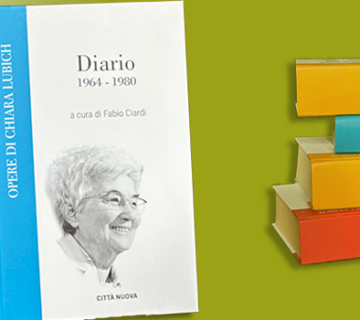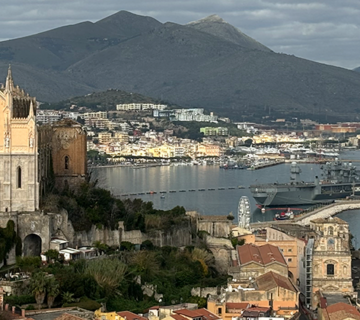 Journalist and art critic Mario Dal Bello used an interesting approach to explain the major points of the Focolare Spirituality and the thought of its founder, Chiara Lubich. In his Dialogue on Art & Beauty he examines a series of European masterpieces to describe the ideal of unity, since “there is a very strong common link between this art and this spirituality,” claims Dal Bello, “and it wasn’t by chance that while admiring Michelangelo’s Pieta, Chiara Lubich prayed God to send artists into the world who were saints. Because what is sanctity if not the perfection of love, and transmission of the beauty of God who is Love? ” The event was offered by the city of Udine in honour of Chiara Lubich in the 70th year since her birth and the 6th anniversary of her Heavenly birth. It was a reflection on her words: “Beauty is harmony, and harmony is highest unity.”
Journalist and art critic Mario Dal Bello used an interesting approach to explain the major points of the Focolare Spirituality and the thought of its founder, Chiara Lubich. In his Dialogue on Art & Beauty he examines a series of European masterpieces to describe the ideal of unity, since “there is a very strong common link between this art and this spirituality,” claims Dal Bello, “and it wasn’t by chance that while admiring Michelangelo’s Pieta, Chiara Lubich prayed God to send artists into the world who were saints. Because what is sanctity if not the perfection of love, and transmission of the beauty of God who is Love? ” The event was offered by the city of Udine in honour of Chiara Lubich in the 70th year since her birth and the 6th anniversary of her Heavenly birth. It was a reflection on her words: “Beauty is harmony, and harmony is highest unity.”
“Many seek to explain art, but that is an impossible feat,” admitted Dal Bello who explains art for a living. “It is ineffable, like the Spirit. It draws us for no reason, like falling in love.” Therefore Dal Bello began with a Christ by El Greco, “from the gaze that one feels for a beloved with which one is bale to grasp the face of God.” This is seeing God in the other and grasping the love there which is one of the key points of the spirituality of Chiara Lubich.
And if the Good Shepherd, indeed the “beautiful shepherd,” as Dal Bello points out, “loves his sheep, then we must also love our neighbour. And this was illustrated in the magnificent mosaic of the Mausoleum of Galla Placidia in Ravenna. Here Christ is shown surrounded by the flock. He is Risen and clothed in light. He points to the jeweled cross he is holding, which is a symbol of the Resurrection.”
By virtue of this mutual love Jesus is present wherever two or more are gathered in his name. This is shown in Rembrandt’s Supper at Emmaus, in which “Jesus enters into our everyday life, to the point that the others don’t even realize it, not even that he breaks the bread.” And this is a presence that makes a change in the community; it makes a difference as can be seen in Raphael’s Transfiguration, in which there is a strong contrast between “the superior level, with Jesus, Moses and Elijah clothed in clear colours and an inferior level where the Apostles are left confused, where darkness prevails.”

To illustrate love for Jesus forsaken on the Cross, which is another aspect of Chiara’s spirituality, Dal Bello examines The Crucifixion by Dali: “Christ is seen from above. He seems to bend over humanity and draw everyone to himself. It is significant that we don’t see his face: because we are all in his face.”
Another central figure emerges – but only to the eye of the expert – from the Final Judgment by Michelangelo: “If you look carefully,” Dal Bello points out, “Mary watches an angel who is raising the souls of the saved, with a Rosary. Mary appears as the one who takes Christians to Heaven and, indeed, the Focolare Movement is also called the Work of Mary.”
Finally there is the Ghent altarpiece by the brothers Hubert and Jan van Eyck, where the Heavenly Jerusalem of Revelation with the entire Church gathered around it, is represented by a contemporary city. This recalls the commitment that focolares are called to bring to the local communities in which they live.


 Italiano
Italiano Español
Español Français
Français Português
Português



No comment